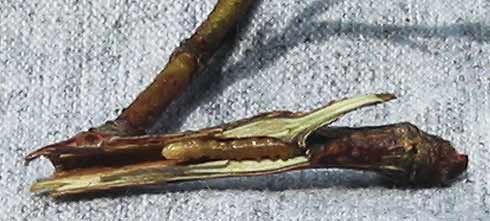

Cane
(Stem) Borer Worm Caterpillars Infesting Blueberry & Rhododendron
Bushes Possibly: Oberea tripunctata (or maybe myops) These images
were taken from Blueberry stems, June 2003, Sterling, Massachusetts-
Stems are split open for viewing of the villain at work. Video clips at bottom. Best official/research links found so far: Bugwood Vermont Extension NCSU 2007 was a slow year, but 2008 they're back at it.
|
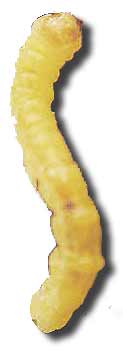 |
Discussion & Gallery
Note that in the pictures, the borer curls out of the linear shaft/trough it has drilled in the stem, curling
only due to the unnatural situation of the cut-away stem for viewing.
The telltale signs:
ends of stems/leaves flagging (wilting) and
Tan-colored frass castings on the ground:
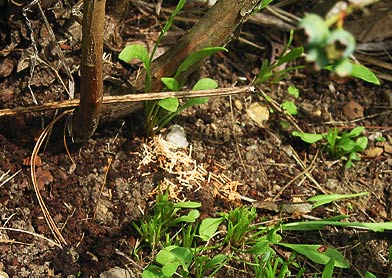
Tan/brown castings (in situ above(center);
below: generated while in the house
from a live worm working away on a table) that look like a cross between
pencil sharpener shavings
and
Chinese
noodles(that you
see
on salad
bars
for crunchy
toppings).
These are prevalent to see from late May into July in
Massachusetts.
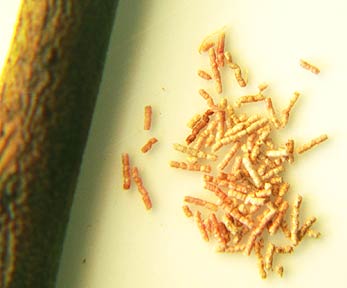
Larvae picture gallery
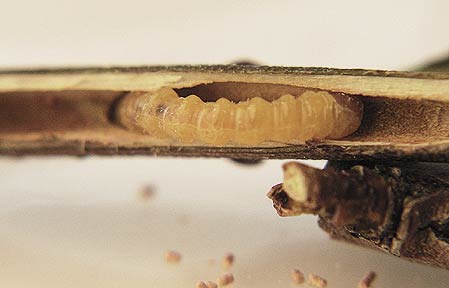
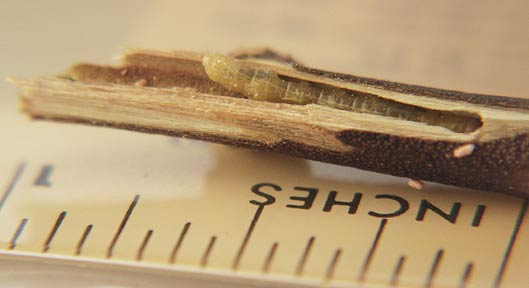
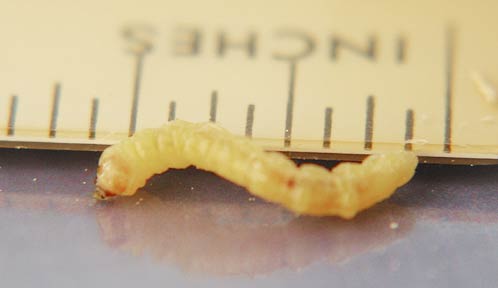
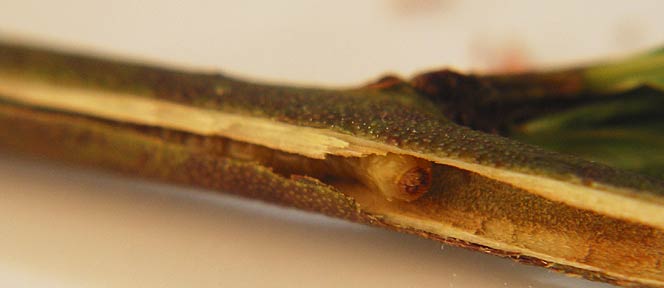
They bore a hole
in the center of the canes to form a tunnel/straw. Above & below it's shown
with the stem easily split apart.
Every 6" or so, they drill holes for air and excrement evacuation
(see red arrows below, the top left hole is a split stem, thus you can see
through to the back white background of the table I was shooting on).
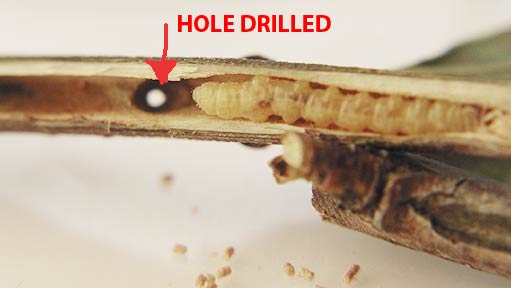
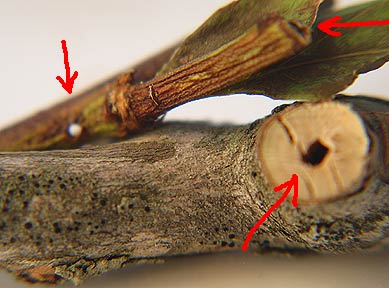
My solutions to downsize their efforts:
1. If found near
the top of a branch, just cut back (every 2-3") until you find the worm or
come to a solid stem.
2. If near the bottom, I have an old hypodermic needle (without the needle)
that i first fill with water to
"find" the air holes-- see the water-in and water-out holes shown below. (The
first time I did this,
I was just expecting to drown the worm, having not thought ahead, and boy was
I surprised when
water spurted out in a hole above, like a water fountain (see btwn the red arrows)-- there has to be
humor here somewhere!)
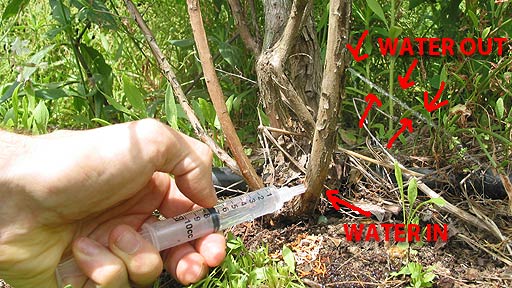
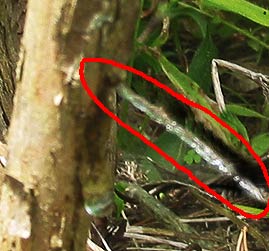
Once I find the
hole, I squirt karo syrup(actually olive oil maybe be as effective altho
not as viscous, but doesn't attract ants!) or some other viscous food product
to suffocate the worm.
For these lower-stem infested areas, my belief is that the branch will still
produce its berries at least this year, now with the worm gone.
I don't want to cut back the stem to the ground in order to find the worm,
and thus in the process destroy the entire branch.
2003 was particularly
bad, out of my 10 largest blueberry bushes, I have had 11 worms (3-4 were
in one bush).
I do not know the life cycle or how they get there-- if you know please write
to me(email at end) and i'll post, and I'll set up a command post in my berry
patch to guard against their invasion!
One year they were in my Rhododendrons.
I hate these varmints so much, I've expended energy in these photos, hoping to help others eradicate them.
2011 Update: Overwintered larva before it pupates in the cane (subsequently donated to USDA for parasitic wasp experiments):
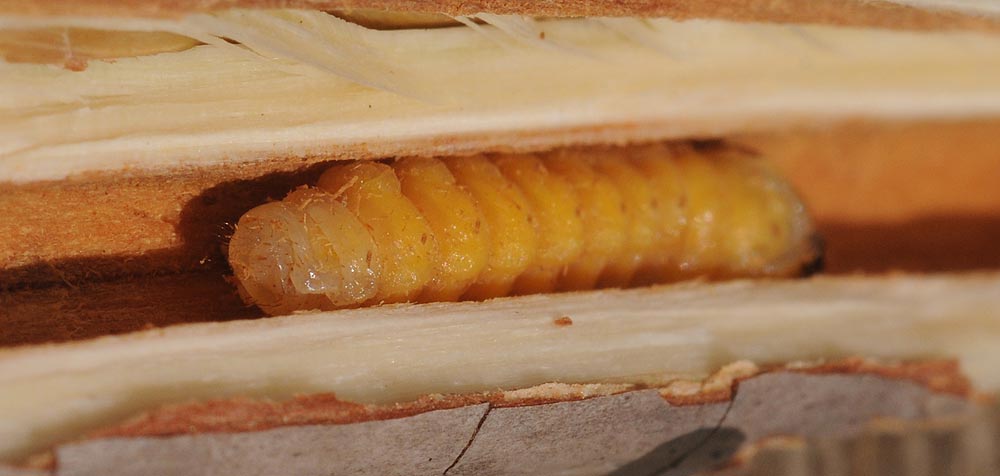
Video clips
Clip
Length (sec)
|
Windows
Media Player
|
Real
Player
|
Quick-
time |
|
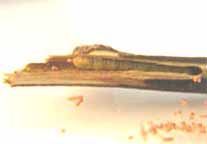 14 14 |
||||
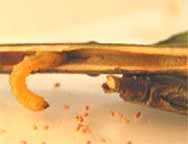 62 |
This shows
the back and forth motion of eating the stem and then generating its
waste. Because the stem is split open, it can curl up outside the linear tunnel. The lights and thrill of being on camera did not phase this little rascal. |
Additional Resources:
http://www.ento.vt.edu/Fruitfiles/Blueberryborers.html
